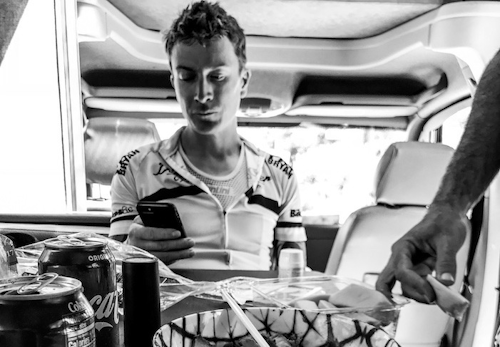Building A Faster Body: 3 Training Tips For Cyclists
I don’t believe I’m wrong in suggesting that, from the moment you started riding your bike, you have wanted to go faster upon it. At the start of your cycling journey, you probably saw some dramatic and impressive increases in your cycling speed. But as time went on, those gains slowed and maybe even stagnated

Some people might tell you that your days of riding faster are behind you, especially if you are approaching, or past, the age of 50. But we are happy to share our magic formula for improving your cycling speed at any age.
Covered in this blog:
- Structure
- Adaptation
- Consistency
- Season planning
- Recovery
- Recovery mindset
Structure
It shouldn’t be a surprise to you that training is one of the most important influences on you riding your bicycle faster. If we reflect back on the opening scenario of when you were a newbie bicyclist, simply riding your bike would have been good enough. Now, however, just going out and riding doesn’t have the same result and is more junk miles than anything else.
When considering average speed as our goal, if junk miles are the enemy of progress, then structure is the ally. While structure can mean different things, in this context structure means having a specific outcome for the session, training with a purpose, and targeting specific intensities that will force an adaptation in your body. It might also mean being goal focused and training with a specific mindset towards that; planning sessions accordingly, and utilising blocks or meso-cycles to see long term, consistent performance growth.
If implementing a regime that seems inflexible is unappealing to you, don’t worry, you can quite easily marry enough free time with your structure to see impressive improvements. The main focus will be ensuring that your free time doesn’t hamper the results of the structured sessions.
What you might consider are some soft rules for your free time. This might look like riding flatter routes and keeping social rides at an actual social pace and low intensity. When considering adding harder group rides, such as chain gangs, you might replace a high intensity, structured interval session in order to keep the structure similar. Replacing your easy days with hard sessions is going to cause challenges later on in your training year.
Adaptation
Adaptation is the goal of training. The easiest way to consider this is to think about lifting weights in the gym. You might start with relatively small muscles and a light weight, but over time you will eventually get stronger, build bigger muscles, and can lift heavier weights. While endurance training is different and harder to visualise - you can’t really see your body utilise fat, carbohydrates, or oxygen more efficiently - the principle is the same.
Hugo has been trained by some of the world's best coaches to be able to prescribe the exact right mix of training - intensity, duration, and recovery - in order for your body to show the necessary adaptation in order to improve and to therefore reach your goals.
We’ve touched on intensity and duration here, and you can skip ahead to the recovery part below to see more on that, but giving your body enough chances to adapt from the training is key. That said, the more training you do the more you will need to do to get the same level of stress. This is why remaining consistent with your training is so important.
Consistency
What most people find, when they start training in a structured manner, is that a lot of their rides are actually quite a bit easier. When self-coaching, most people tend towards riding hard all the time, but when you actually structure your training, this is often quite a bit less.
While training with structure might actually accumulate less training stress in the short term, it almost certainly allows for greater stress to be accumulated over the longer term. This is more advantageous as your body has a greater chance of adapting in this way. Of course, the caveat to this is actually remaining consistent and following the training you have set out to do over this longer time period.
Much like structure, if remaining consistent over a long period of time sounds daunting, don’t worry, it is important to take periodic breaks from structured training and to not over fixate on this type of training. What matters is when you take these breaks.
Season planning
Planning a season is where Hugo can really shine. Hugo will analyse your data, both previous and continuous, and deliver the best possible training for you. This doesn’t just mean the right sessions at the right intensity, but the right amount of training stress over a long period. When you look at training on a macro - typically 9-12 month - scale, you are less likely to overtrain and more likely to see incredible performance improvements.
Once you have successfully completed your goals, there is an opportunity to reset your goals to something focused more on maintenance or to even take some time off the bike before starting the next macro cycle. Some periods of rest are especially important to allow full recovery between training for your goals.
Recovery
Recovery could easily be considered the most important factor of training. It really matters little how much training you do, what matters is if you can recover from it. While this sounds simple, it is actually quite complex. As mentioned above, most people new to structured training remark that it is easy compared to their previous ride hard most of the time routine. The challenge is that fatigue can sneak up on you over a long period, making it harder to realise you are actually tired.
Hugo makes your recovery very easy. Provided you follow the sessions Hugo prescribes, you should see improvements over a long period. Of course, there are times when other influences might play a role in your recovery - excessive work stress, additional physical activity, or even sickness, for example - so keep track of everything you can and ensure Hugo knows what’s going on by providing certain metrics on a regular basis. Remember that the more data Hugo has, the better quality your training will be.
Of course, you should do your part too. Asides from following the prescription Hugo sets, you can implement a routine that will aid recovery. Methods such as massage, air compression trousers, and percussion recovery guns are great, but don’t neglect simple methods such as stretching, foam rolling, and salt baths.
Recovery mindset
Also consider working on your recovery mindset. While most of us have been told to do stuff like walking more, taking the stairs over the lift/elevator, standing more at our desk, and so on, it might not be necessary, or good, for your recovery and cycling performance.
In reality, you are doing far more exercise - training - than the average person, who this advice is aimed at, so consider asking yourself this simple question when faced with a decision “will the action I take here aid or hinder my recovery?”.
Of course the odd long hike or walking up the stairs is unlikely to hinder your cycling performance, but cumulatively you could be doing more harm than good. It is up to you to decide where the line is in pursuit of building a faster body.
Humango’s fatigue detection
Nothing disrupts training consistency and performance growth like overtraining. Utilising subjective feedback and quantitative data pulled from your devices, Humango can ensure you never get to that point. Hugo will be ready to warn you that you might be overreaching and suggest a rest day.
Coach Pav
Coach Pav is an Amazon #1 New Release Author and coach to clients who have set world records (Mark Beaumont), earned their world champion jersey (Steve Bate), and won ultra-cycling events (Matt Seward and Thomas Becker).
Most of his clients are those riding a Gran Fondo or two, and his favorite is the Maratona dles Dolomites.
